Is your garden overrun with pests? Learn about 9 beneficial insects for pest control plus how to attract them to your garden!
One of the most important but also most overlooked part of organic pest control is the use of beneficial insects.
This site contains affiliate links. If you make a purchase using one of these links, I may earn a commission. Please see my disclosure page for more information about cookies collected and our privacy policy.
Beneficial insects are the GOOD bugs that will help you fight off the BAD bugs (pests) in your vegetable garden by feeding on them.
So which bugs are good bugs? Here are 9 beneficial insects to help you win the war on pests in the garden.
9 Beneficial Insects for Your Vegetable Garden
Ladybug
The ladybug is probably the most well known beneficial insect, and for good reason.
Ladybugs in the garden can mean the difference between winning the fight on aphids and losing it!
Lady bugs not only feed on aphids but also spider mites, whiteflies, and potato beetle larva and more.
Try planting calendula, dill, marigold, or chives to attract lady bugs.
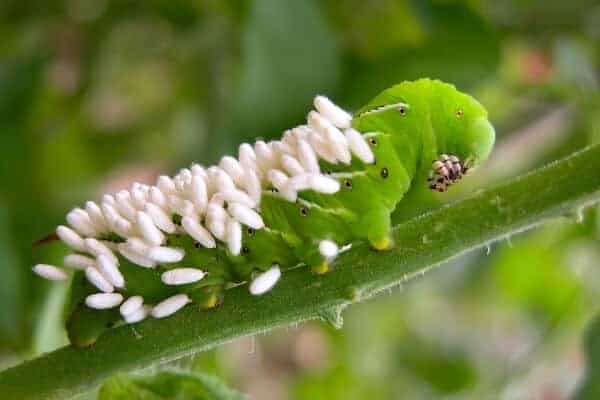
Tomato hornworm with braconid wasp eggs on its back
Braconid Wasp
Braconid wasps are small wasps that lay their eggs on the host insect.
If you’ve ever seen a Tomato hornworm’s back covered in rows of white eggs – that’s the work of the braconid wasp. Their eggs hatch and the larvae will feed on the host, weakening and killing it.
It also preys on cabbage worms, caterpillas, cutworms, and beetle larva.
Plant flowering herbs and ornamental flowers to help attract this beneficial insect.
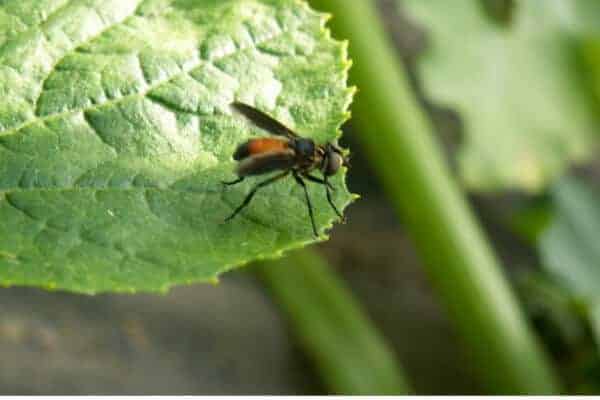
The tachanid fly can help fight squash bugs!
Tachinid Fly
I’ll never forget the first time I saw a Tachinid fly in my garden. Actually- I had a whole fleet of them. And I credit them for helping my zucchini plants last much longer than normal in the garden that year.
Tachinid flies lay their eggs on or in their host insect. When the eggs hatch the larvae feed on the pest.
It preys on squash bugs, potato beetles, Mexican bean beetles, and more.
Play flowering herbs, chamomile, dill, and cilantro to draw in these flies.
Green Lacewing
The green lacewing is a slender green insect with large, lace-like wings.
The adults feed on nectar and honeydew but the larva feeds on many pests such as cabbage worm, caterpillar eggs, spider mites, aphids, and more.
Plant things like cosmos, coneflower, dill, and other flowering herbs to attract the lacewings.
Praying Mantis
I’ve always loved praying mantises and I usually can find all sizes of them throughout my garden in the summer. One year I had large beetles eating my eggplant- and the praying mantis loved to help me get rid of them!
Praying mantis preys on aphids, mosquitoes, beetles, hard-bodied insects, and more.
Plant cosmos, marigold, calendula, and culinary herbs to attract them.
Spider
Even if you hate them, spiders are definitely beneficial to have in the garden.
Web building spiders can catch flying insects in their webs, while ground spiders hunt for pests on the ground.
Spiders prey on aphids, mites, beetles, and caterpillars.
Encourage spiders by using mulch to hide in on the ground. And plant flowers and tall crops such as corn or sunflowers to allow spiders to spin their webs on.
Soldier Beetle
Soldier beetles are beneficial both as a pollinator (adults) and predator (larva). They look very similar to lightning bugs- just without the light!
Soldier beetles prey on aphids, cucumber beetles, soft bodied insects, and beetle larva.
Ground Beetle
Ground beetles love to hide under wood, mulch, or the base of perennial plants.
They eat a variety of garden pests including slugs, caterpillars, aphids, cutworms, and more.
Plant perennials in the garden or provide a beetle refuge to encourage them to live in the garden.
Pick up a copy of my Companion Planting Guide and Binder to help you design the perfect garden beds with companion planting in mind. It’s got example beds, charts, plant profile, and planning pages. Plus a bonus guide on beneficial insects in the garden!
Pirate Beetle
Pirate bugs- or beetles- are small black and white insects that suck the juices and insides of garden pests.
This beneficial insect preys on aphids, spider mites, thrips, cornworms, and other insects eggs.
Use marigold, calendula, and other flowering herbs to attract the pirate beetle.
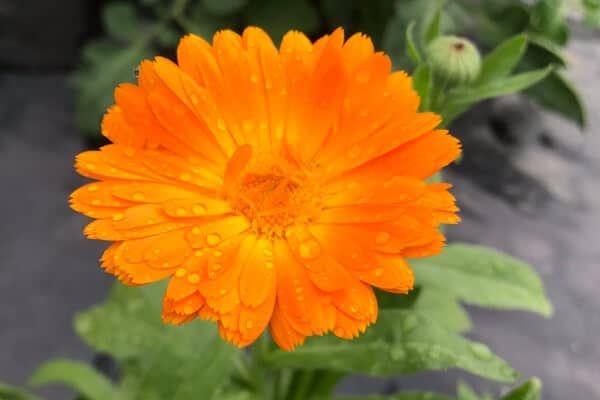
Calendula is great for attracting beneficial insects!
3 Tips for Attracting More Beneficial Insects to Your Garden
It’s great to know which beneficial insects you want in your garden, but how do you get them there in the first place?
Here are 3 tips for attracting the most beneficials to your vegetable garden.
Plant Attractive Flowers and Herbs Throughout Your Garden
This is one of the basics of companion planting.
Plant the flowers and herbs that attract the beneficial insects close by the crops affected by the pests.
Above I listed some of the flowers and herbs you can plant to attract these beneficials, but check out the following for more ideas:
- The Best Flowers to Plant In Your Vegetable Garden
- 15 Herbs to Use as Companion Plants in Your Garden
Don’t Use Pesticides- Even Organic Ones
I don’t like to spray anything at all in my garden- not even organic sprays- unless it’s the absolute last resort.
One of the reasons for this is that most organic pesticides don’t differentiate between good bugs and bad bugs.
So if you don’t want to kill your spiders, lady bugs, and beetles- don’t spray!
Leave Them Be
Many predatory insects work by laying their eggs on the pest and then the larvae feed on the pest after they hatch.
If you find a hornworm covered in eggs or a squash bug with small white dots (eggs) on their back- resist the temptation to destroy that bug.
Allow the larva to hatch and you’ll have more beneficials soon!
Learn More About Using Companion Planting
The Ultimate Guide to Companion Planting
How to Use Trap Crops in the Garden
16 Ways to Use Companion Planting to Control Pests

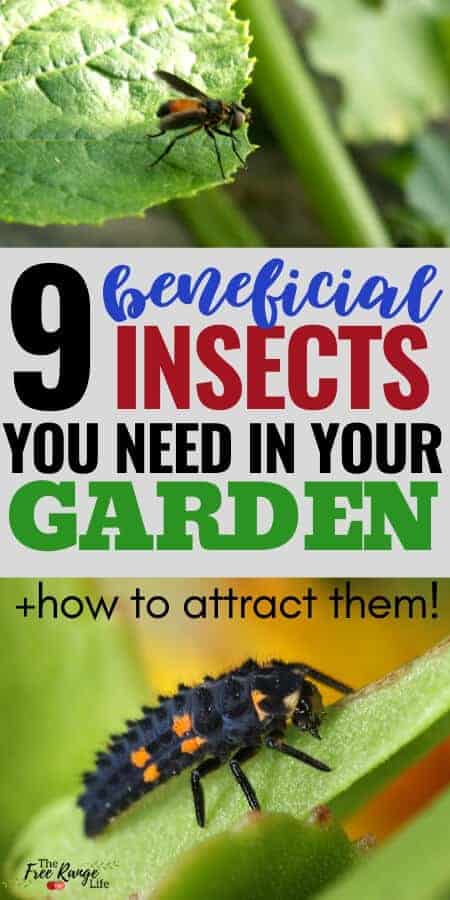
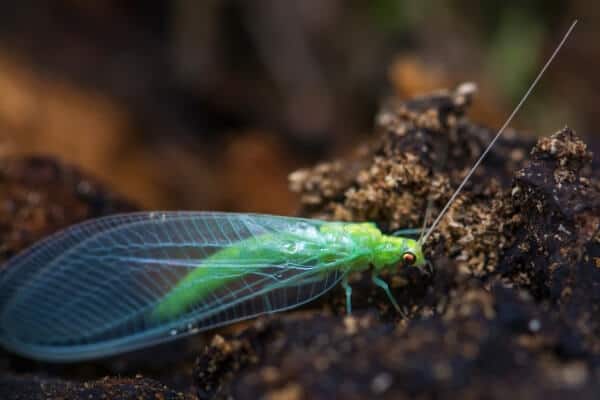
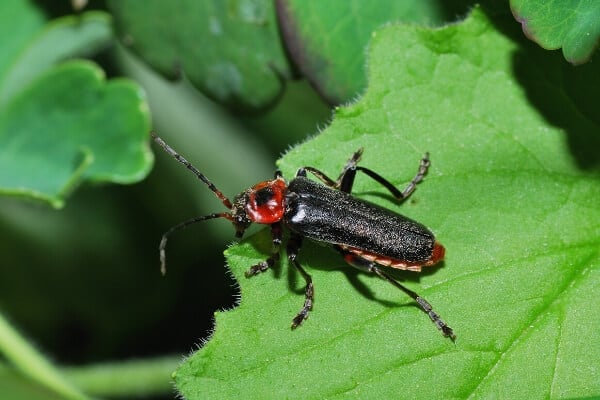

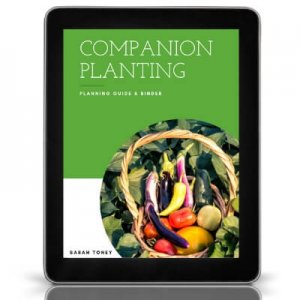
I love your advice,mostly in planting the vegetables and garden flowers and their companion plants
I like your advice in planting
I was told the best way is to move the bug away from the plant don’t kill it this would allow the wasp eggs to hatch and still let the wasp to get back to the garden killing it naturally.
How to get rid of Iguanas. They make home gardening almost impossible is South Florida.